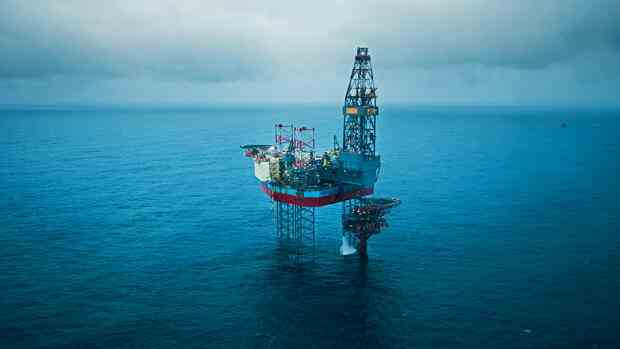In Denmark, Wintershall is driving the “Greensand” project with the British chemical group Ineos.
(Photo: Wintershall Dea/Sören Weper)
Dusseldorf The gas company Wintershall Dea and the Belgian transmission system operator Fluxys want to cooperate on the subject of CO2 storage. The two companies announced this on Tuesday. A cross-border CO2 pipeline network is to be created between southern Germany and Belgium.
The plan is for CO2 to flow from the industrial centers in southern Germany via pipelines to the German-Belgian border. From there, the emissions are to reach Zeebrugge through a CO2 network developed by Fluxys in Belgium and then to offshore storage sites in the North Sea, in which Wintershall is involved.
Zeebrugge is located on the Belgian North Sea coast and is only around 500 kilometers away from Ludwigshafen, for example, where the chemical company BASF is based, among others. On Tuesday, the two companies did not announce from which company the CO2 that Wintershall and Fluxys want to send to Belgium should come from. However, Wintershall is a subsidiary of BASF and the chemical industry – like the steel industry – is a major CO2 emitter.
The topic of CO2 storage is currently rapidly gaining in importance. Through so-called carbon capture and storage, the emissions are to be captured and stored underground instead of being released into the atmosphere. This is supposed to slow down climate change.
Political support for this technology, against which there have previously been reservations, is also increasing. For example, Economics Minister Robert Habeck spoke out against CO2 storage off the German coast during his time as state politician in Schleswig-Holstein. However, he recently visited a CCS project in Norway. CO2 storage in Germany is now also being examined.
Wintershall starts CO2 storage in the “Greensand” project on Wednesday
Numerous business partnerships are currently being established around the topic of CCS. Wintershall in particular is active here. In February, Wintershall boss Mario Mehren said at a presentation of the annual balance sheet: “Our goal is to build up a carbon management and hydrogen business with which we can potentially save 20 to 30 million tons of CO2 per year by 2040. That corresponds to 60 percent of the CO2 emissions of the large German steel industry.”
Wintershall also cooperates with companies from the gas industry in other countries. For example in Denmark: This Wednesday the first CO2 storage facility in the Danish North Sea is to be opened. Wintershall is driving the “Greensand” project there together with the British chemical group Ineos.
Wintershall also secured a first storage license for CCS storage in Norway in 2022 in a field called “Luna”. The company is working with the Norwegian gas and oil group Equinor (formerly Statoil) to bring German CO2 to Norway.
Equinor, in turn, wants to work with Fluxys to build a more than 1000-kilometer export pipeline for CO2 from Zeebrugge to Norway. A final investment decision should be made here by 2025, and the project should go into operation before the end of this decade.
More: The storage of CO2 is booming – but Germany is hesitant
